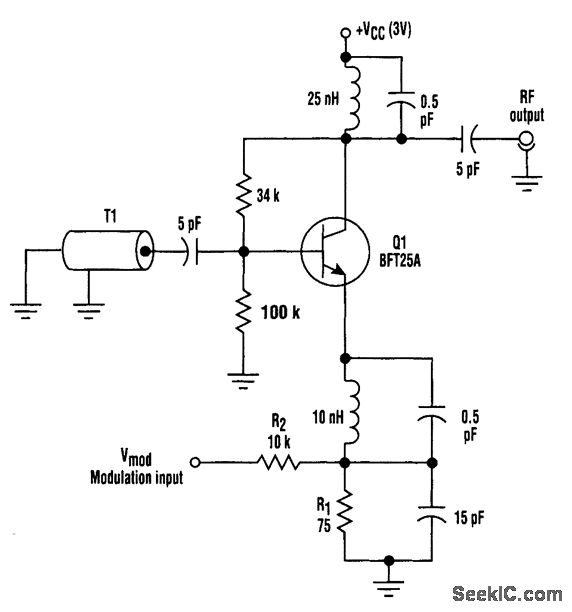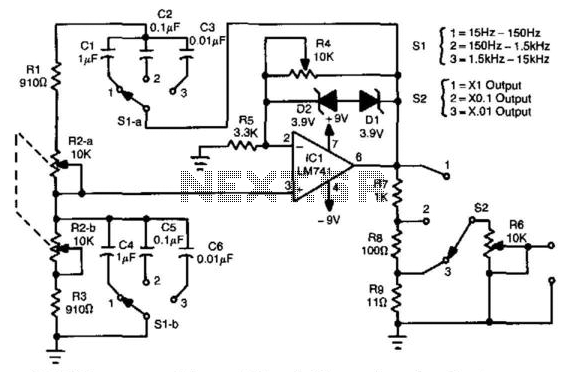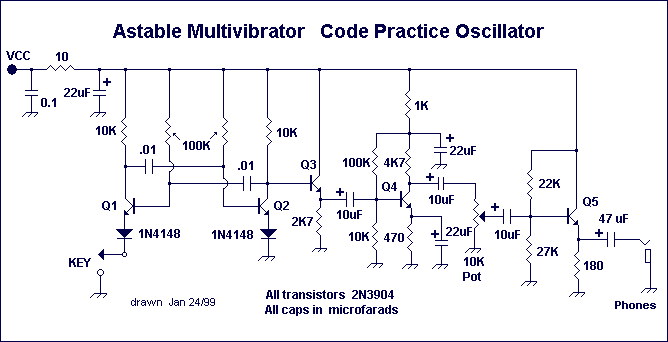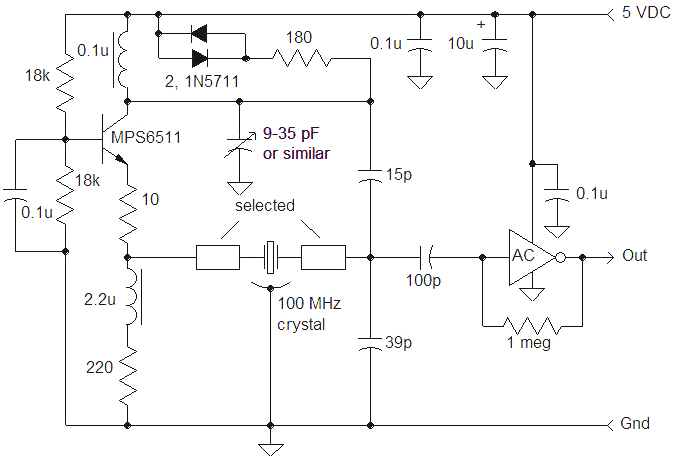
Pierce harmonic oscillator 20Mhz
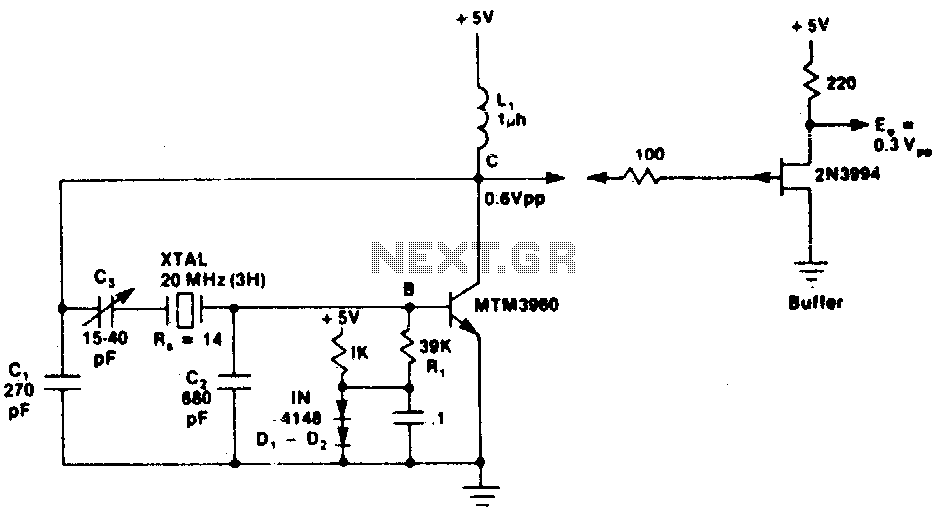
This circuit exhibits excellent short-term frequency stability due to the external load connected across the crystal, which is predominantly capacitive rather than resistive. This configuration results in a high in-circuit quality factor (Q) for the crystal.
The circuit utilizes a crystal oscillator configuration that leverages the properties of the crystal to achieve superior frequency stability. The crystal is connected in a manner that minimizes resistive loading, allowing it to operate closer to its natural resonant frequency. The predominant capacitive load enhances the crystal's Q factor, which is a measure of its energy loss relative to the energy stored in the system.
In practical terms, a high Q factor indicates that the crystal can maintain its oscillation frequency with minimal drift over short periods, making it ideal for applications that require precise timing signals. The capacitive loading can be achieved through the use of capacitors that are strategically placed in parallel with the crystal. This arrangement allows for fine-tuning of the oscillator's frequency and improves its overall stability.
Furthermore, the circuit may include additional components such as feedback resistors and operational amplifiers to further enhance performance and ensure that the oscillator maintains a consistent output. The design should also consider temperature compensation techniques to mitigate frequency variations caused by changes in ambient temperature, thereby preserving the integrity of the oscillation frequency.
Overall, this circuit design is well-suited for applications in communication systems, clock generation, and other electronic devices where frequency precision is critical.This circuit has excellent short term frequency stability because the external load tied across the crystal is mostly capacitive rather than resistive giving the crystal a high in-circuit Q.
The circuit utilizes a crystal oscillator configuration that leverages the properties of the crystal to achieve superior frequency stability. The crystal is connected in a manner that minimizes resistive loading, allowing it to operate closer to its natural resonant frequency. The predominant capacitive load enhances the crystal's Q factor, which is a measure of its energy loss relative to the energy stored in the system.
In practical terms, a high Q factor indicates that the crystal can maintain its oscillation frequency with minimal drift over short periods, making it ideal for applications that require precise timing signals. The capacitive loading can be achieved through the use of capacitors that are strategically placed in parallel with the crystal. This arrangement allows for fine-tuning of the oscillator's frequency and improves its overall stability.
Furthermore, the circuit may include additional components such as feedback resistors and operational amplifiers to further enhance performance and ensure that the oscillator maintains a consistent output. The design should also consider temperature compensation techniques to mitigate frequency variations caused by changes in ambient temperature, thereby preserving the integrity of the oscillation frequency.
Overall, this circuit design is well-suited for applications in communication systems, clock generation, and other electronic devices where frequency precision is critical.This circuit has excellent short term frequency stability because the external load tied across the crystal is mostly capacitive rather than resistive giving the crystal a high in-circuit Q.
